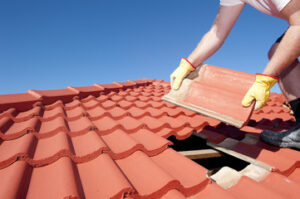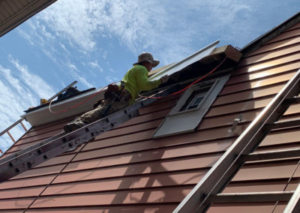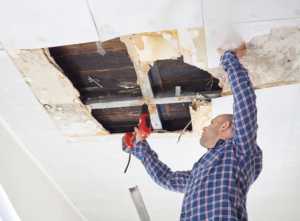Search engines provide users with the most accurate and relevant answers to their searches. They shy away from showing incorrect, outdated, or unclear information. Your goal as a dental marketer is to prove to these search engines that your client’s practice is the premier source of information in their area. Click Here to learn more.
Keyword research is a key component of dental seo and ensures your website is optimized for the search terms people enter into Google. When done correctly, this can dramatically improve your website’s visibility and attract more patients. However, it takes time and dedication to see results, so it’s important to regularly monitor and evaluate your website’s performance. This includes looking at your organic traffic, evaluating your location in searches (keyword rankings), and measuring the number of new patients you get from your site.

Dental SEO involves implementing techniques to optimize your website for specific keywords in order to rank high in search engine results. This requires extensive research, expertise, and time to implement. The best way to avoid this hassle is to hire a dental SEO company to handle your website’s optimization. These companies specialize in dental marketing and have a deep understanding of the industry. They also know how to handle all of the technical aspects of optimizing your website for SEO.
A good dental SEO strategy involves using a combination of local keywords and service-related keywords to target a specific audience. Adding the location of your practice to these keywords helps you target potential customers in your area. You can use the Google AdWords Keyword Planner tool to find relevant keywords for your business. This tool will give you a list of potential keywords and the number of searches they receive each month.
Once you have a list of potential keywords, you can start creating content to rank for these terms. This can include blog posts, FAQs, and service pages on your website. Be sure to include the keywords in the title, header, and meta description of each page. You can also use these keywords in your social media content and in links to other websites.
In addition to utilizing targeted keywords, a dental SEO campaign must continually evolve and adapt to changes in search engine algorithms. This will help you maintain a competitive advantage over your competitors. To do this, you should track your progress regularly and make adjustments to your keyword strategy.
On-page optimization
A successful dental SEO strategy takes time and patience. It can take several months to see significant improvements in your ranking and website traffic, but consistent implementation of effective tactics will ultimately yield long-term results. A few key components to focus on include optimizing your website content; creating a great first impression with a modern, custom-designed site that is easy to use and loads quickly on mobile devices; and ensuring that keywords are present in your page titles and meta tags.
It is also important to create quality, original content that provides value to potential patients. This includes blogging, video content, and a range of other digital marketing activities that promote your practice online. Search engines reward sites with fresh, relevant content that is regularly updated. Additionally, quality content can help attract backlinks, which are a crucial component of dental seo.
Another important aspect of dental SEO is local optimization. This is where you ensure that your business information is correct on your website and claimed on all local listings, including Google Business Profiles and Bing Places. Your Google Business Profile is displayed in branded search results and helps people learn more about your business, including office hours, services, photos, and other important details.
A third component of dental SEO is link-building. This is where you try to get other websites to link to your site by providing valuable content or by building relationships with other webmasters. This is an important part of the process because it can improve your search engine ranking by boosting the number of backlinks to your website.
Search engine optimization is a powerful marketing tool that can help dentists acquire new patients and build their brands online. It is an essential part of any dental digital marketing strategy, and it can be used by general dentists, orthodontists, pediatric dentists, periodontists, prosthodontists, oral surgeons, and endodontists. With the right dental SEO strategies in place, you can be sure that your patients will find you online and contact your practice to schedule an appointment. This will boost your patient numbers and drive revenue for your dental practice.
Link building
Backlinks are a critical component of any dental SEO strategy. They are links on other websites that lead to your website and help Google determine whether or not your site is trustworthy and credible. A strong link-building strategy can boost your website’s domain authority and improve its ranking on SERPs. In addition, high-quality backlinks can increase your visibility and credibility among patients and potential clients.
To achieve this, you need to create engaging and valuable content on your website and share it with other sites. This process is called link-building, and it requires patience and strategic planning. The key to acquiring quality backlinks is relevance, meaning that your link should be on a site with a similar audience. For example, a link from a healthcare or dental blog is more beneficial than one from a video gaming website. It is also important to monitor your backlinks on a regular basis. This way, you can identify and remove low-quality or irrelevant links.
When you start using a dental SEO agency, you will benefit from the company’s experience and expertise in implementing a comprehensive digital marketing campaign. These services include keyword research, website optimization, local listing setup, and more. They also provide detailed analytics and reports that you can use to track the results of your campaign.
Dental SEO is a powerful tool for dental practices to grow their business and attract new patients. It uses a variety of strategies to make your site appear more visible in organic search results and encourage potential patients to call you for an appointment. Its benefits include increased visibility, brand recognition, and higher conversion rates.
A strong dental SEO strategy can improve your website’s rank in organic search results, allowing you to reach more patients and increase your revenue. Choosing the right SEO agency is an essential step in this process, as it can help you implement the best practices for optimizing your dental website.
As the population continues to urbanize, consumers are relying less on the recommendation of friends and family and more on online reviews. That’s why it’s important to focus on getting good reviews on your website, Google Business Profile, social media, and other directory sites. This can increase your chances of being included in the “Local Pack” of search results, which increases phone calls and appointments by up to 59%.
Social media
SEO is a key component of digital marketing, and it’s especially important for dental practices. Whether you’re looking to attract local patients or build brand awareness, a strong SEO strategy can help you get more customers and stay ahead of the competition. It can be tricky to rank highly in search engines, but it is possible if you follow the right steps.
Dental SEO is a series of strategies that improve a website’s visibility in online searches. It includes optimizing content and title tags with relevant keywords, improving site speed and mobile-friendliness, creating high-quality content, and building links to the site. Search engines take into account on-site and off-site ranking factors when deciding where to place websites in search results. On-site ranking factors include things like website structure, navigation, and content. Off-site ranking factors are things that influence your rankings from outside of your site, such as reviews, citations, and backlinks.
To optimize your dental website for SEO, ensure that it is easy to navigate and contains keywords in the title, meta tags, and body of the text. It is also important to use keyword-driven, original content that appeals to the needs of potential patients. This will ensure that your website ranks highly in search engine results pages (SERPs).
Dentists should also make sure to update their Google Business Profile with accurate information about their practice and services. A well-optimized Google Business Profile can appear in branded or local search results, helping potential patients learn more about the practice. It can also show up in a variety of other search results, such as maps, reviews, and local business listings.
It’s also a good idea to create an informative blog that answers common questions that patients may have. This will help you rank for long-tail keywords and drive traffic to your website. In addition, blog posts can help you attract links from other sites, which is another important ranking factor for SEO. Remember to keep your content updated and avoid keyword stuffing, which will result in a penalty from Google. Instead, try to target 1-2 long-tail keywords per post or page.




